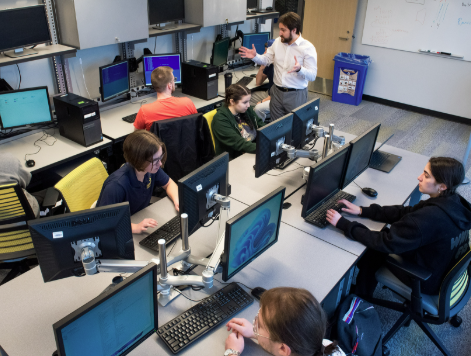As schools increasingly integrate digital tools into everyday learning, cyber classrooms—virtual learning environments that rely on internet-based platforms—are becoming central to education. With this shift comes the dual responsibility of fostering innovation while ensuring student safety and data privacy. Schools must balance cutting-edge technology with robust security measures to create effective and secure digital learning spaces.
What Are Cyber Classrooms?
Cyber classrooms refer to online environments where students access coursework, engage with peers and teachers, and complete assignments using platforms such as Google Classroom, Microsoft Teams, and other learning management systems (LMS). These digital spaces offer flexibility, collaboration, and access to a wide array of learning resources.
Key Innovations in Cyber Classrooms
- Real-Time Collaboration Tools
Video conferencing, shared documents, and interactive whiteboards enable students to work together across distances in real time, enhancing group learning and participation. - Personalized Learning Paths
AI-powered tools help tailor instruction to each student’s pace and proficiency, promoting mastery-based progression. - Multimodal Content Delivery
Cyber classrooms use videos, audio, simulations, and games to support diverse learning styles and increase engagement. - Automated Feedback Systems
Digital platforms can provide instant feedback on quizzes and assignments, helping students correct mistakes and reinforce learning.
Security Challenges in Cyber Classrooms
- Data Privacy Risks: Student information, including grades and personal data, must be safeguarded against breaches.
- Unauthorized Access: Weak passwords or shared devices may expose classrooms to outsiders.
- Cyberbullying and Inappropriate Content: Without proper monitoring, online environments can be misused.
- Phishing and Malware Attacks: Email and platform links can become channels for malicious software if not properly filtered.
Strategies for Securing Cyber Classrooms
- Strong Authentication: Require multi-factor authentication and secure passwords for all users.
- Regular Updates and Patches: Keep software and security systems up to date to reduce vulnerabilities.
- Digital Citizenship Education: Teach students about responsible online behavior, privacy, and reporting harmful content.
- Use of Encrypted Platforms: Select LMS tools with built-in encryption and compliance with student data protection laws.
- Role-Based Access: Limit user permissions to reduce the risk of accidental or intentional misuse.
Balancing Innovation with Security
- Involve IT professionals in platform selection and policy development
- Conduct regular training for staff and students on cybersecurity best practices
- Evaluate tools not only for functionality but also for their security features and compliance standards
Conclusion
Cyber classrooms represent a powerful evolution in education, enabling more flexible, inclusive, and personalized learning. However, their success depends on thoughtful integration of innovation and security. By prioritizing digital safety and equipping educators and students with the tools to navigate online spaces responsibly, schools can build cyber classrooms that are both dynamic and secure—laying the groundwork for a resilient and future-ready education system.













